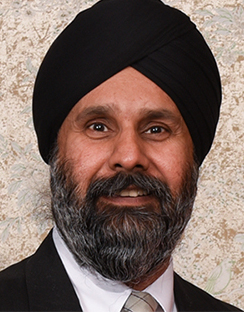Practice patterns among U.S. gastroenterologists regarding endoscopic management of Barrett's esophagus. Journal Article
Local Library Link: Find It @ Loyola
| Authors: | Singh, M; Gupta, N; Gaddam, S; Balasubramanian, G; Wani, S; Sinh, P; Aghaie, K; Higbee, AD; Rastogi, A; Kanakadandi, V; Bansal, A; Sharma, P |
| Article Title: | Practice patterns among U.S. gastroenterologists regarding endoscopic management of Barrett's esophagus. |
| Abstract: | BACKGROUND: Endoscopic management of Barrett's esophagus (BE) has evolved over the past decade; however, the practice patterns for managing BE among gastroenterologists remain unclear. OBJECTIVE: To assess practice patterns for management of BE among gastroenterologists working in various practice settings. DESIGN: A random questionnaire-based survey of practicing gastroenterologists in the United States. The questionnaire contained a total of 10 questions pertaining to practice setting, physician demographics, and strategies used for managing BE. SETTING: Survey of gastroenterologists working in various practice settings. INTERVENTION: Questionnaire. MAIN OUTCOME MEASUREMENTS: Practice patterns for endoscopic imaging and management of BE. RESULTS: The response rate was 45% (236/530). The majority (85%) were gastroenterologists in community practice, 72% were aged 41 to 60 years, 80% had >10 years of experience, and 81% had attended postgraduate courses and/or seminars on BE management. A total of 78% did not use the Prague C M classification, and about a third used advanced endoscopic imaging routinely (37%) or in selected cases (31%). For nondysplastic BE, 86% practiced surveillance, 12% performed ablation, and 3% did no intervention. For BE with low-grade dysplasia, 56% practiced surveillance, 26% performed endoscopic ablation in all low-grade dysplasia cases, and 18% performed endoscopic ablation in only selected patients with low-grade dysplasia. The majority of respondents (58%) referred their patients with high-grade dysplasia to centers with BE expertise, 13% performed endoscopic ablation in all patients with high-grade dysplasia, 25% performed endoscopic ablation in selected cases only, and 3% referred these patients for surgery. The most frequently used endoscopic eradication therapy was radiofrequency ablation (39%) followed by EMR (17%). LIMITATIONS: The sample may be unrepresentative, participation in the study was voluntary, and responses may be skewed toward following the guidelines. CONCLUSION: Results from this survey show that the majority of practicing gastroenterologists in the United States practice surveillance endoscopy in patients with nondysplastic BE and provide endoscopic therapy for those with high-grade dysplasia. The Prague C M classification and advanced imaging techniques are used by less than a third of gastroenterologists. Practice patterns did not appear to be affected by respondent age or duration of clinical practice. |
| Journal Title: | Gastrointestinal endoscopy |
| ISSN: | 1097-6779; 0016-5107 |
| Publisher: | Mosby, Inc |
| Date Published: | 2013 |


